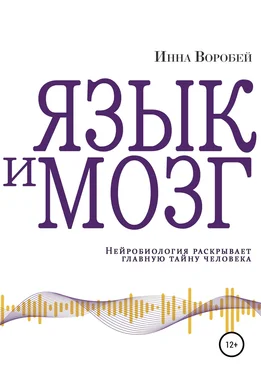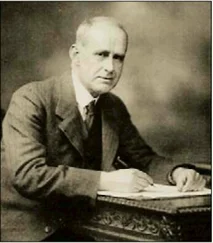Boroditsky L., Schmidt L. & Phillips W. (2003). Sex, Syntax, and Semantics. In Gentner, D. & Goldin-Meadow, G. (Eds.) Language in Mind: Advances in the study of Language and Cognition (pp. 61–80). Cambridge: MIT Press.
Segel E. & Boroditsky L. (2011). Grammar in art. Frontiers in Psychology, 1(JAN). https://doi.org/10.3389/fpsyg.2010.00244
Boroditsky L., Ham W. & Ramscar M. (2019). What is universal in event perception? Comparing English & Indonesian speakers. In Proceedings of the Twenty-Fourth Annual Conference of the Cognitive Science Society (pp. 136–141). Routledge. https://doi.org/10.4324/9781315782379-61
Hauser, M. D. (2002). The Faculty of Language: What Is It, Who Has It, and How Did It Evolve? Science, 298(5598), 1569–1579. doi:10.1126/science.298.5598.1569
Kuhl, P. K., & Miller, J. D. (1975). Speech perception by the chinchilla: Voiced-voiceless distinction in alveolar plosive consonants. Science, 190(4209), 69–72. https://doi.org/10.1126/science.1166301
Kuhl, P. K. (1981). Discrimination of speech by nonhuman animals: Basic auditory sensitivities conducive to the perception of speech-sound categories. Journal of the Acoustical Society of America, 70(2), 340–349. https://doi.org/10.1121/1.386782
Harley, T. A. Talking the Talk: Language, Psychology and Science. London: Taylor & Francis Group, 2017. 314 p. – P. 39–40.
Tecumseh Fitch, W. (2000). The Phonetic Potential of Nonhuman Vocal Tracts: Comparative Cineradiographic Observations of Vocalizing Animals. Phonetica, 57(2–4), 205–218. doi:10.1159/000028474
https://homepage.univie.ac.at/tecumseh.fitch/hoover-a-talking-seal.html
https://en.wikipedia.org/wiki/Hoover_(seal)
https://royalsocietypublishing.org/doi/10.1098/rspb.2017.2171
https://www.youtube.com/watch?v=p9XmBkDLysM
https://www.theguardian.com/science/video/2012/nov/01/koshik-elephant-talks-korean-video
Harley, T. A. Talking the Talk: Language, Psychology and Science. London: Taylor & Francis Group, 2017. 314 p. – P. 40–42.
Fitch, W. T. (2017, February 1). Empirical approaches to the study of language evolution. Psychonomic Bulletin and Review. Springer New York LLC. https://doi.org/10.3758/s13423-017-1236-5
Harley, T. A. Talking the Talk: Language, Psychology and Science. London: Taylor & Francis Group, 2017. 314 p. – P. 38.
https://trv-science.ru/2016/12/20/chetveronogie-slushateli/
Harley, T. A. Talking the Talk: Language, Psychology and Science. London: Taylor & Francis Group, 2017. 314 p. – P. 44–45.
Berwick, R. C., Friederici, A. D., Chomsky, N., & Bolhuis, J. J. (2013). Evolution, brain, and the nature of language. Trends in Cognitive Sciences. Elsevier Ltd. https://doi.org/10.1016/j.tics.2012.12.002
Fitch, W. T. (2004). Computational Constraints on Syntactic Processing in a Nonhuman Primate. Science, 303(5656), 377–380. doi:10.1126/science.1089401
Friederici, A. D. (2004). Processing local transitions versus long-distance syntactic hierarchies. Trends in Cognitive Sciences, 8(6), 245–247. doi:10.1016/j.tics.2004.04.013
Friederici, A. D., & Chomsky, N. (2017). Language in our brain: The origins of a uniquely human capacity. Language in Our Brain: The Origins of a Uniquely Human Capacity (pp. 1-284). The MIT Press.
Chomsky, N. (2010). Some simple evo devo theses: How true might they be for language? In The Evolution of Human Language: Biolinguistic Perspectives (pp. 45–62). Cambridge University Press. https://doi.org/10.1017/CBO9780511817755.003
de Boer, B., Thompson, B., Ravignani, A., & Boeckx, C. (2020). Evolutionary Dynamics Do Not Motivate a Single-Mutant Theory of Human Language. Scientific Reports, 10(1). https://doi.org/10.1038/s41598-019-57235-8
Schreiweis, C., Bornschein, U., Burguière, E., Kerimoglu, C., Schreiter, S., Dannemann, M., … Graybiel, A. M. (2014). Humanized Foxp2 accelerates learning by enhancing transitions from declarative to procedural performance. Proceedings of the National Academy of Sciences of the United States of America, 111(39), 14253—14258. https://doi.org/10.1073/pnas.1414542111
Fisher, S. E. (2015). A Molecular Genetic Perspective on Speech and Language. In Neurobiology of Language (pp. 13–24). Elsevier Inc. https://doi.org/10.1016/B978-0-12-407794-2.00002-X
Tallerman, M., & Gibson, K. R. (2012). Introduction to Pat III: The prehistory of language: When and why did language evolve. In M. Tallerman & K. R. Gibson (Eds.), The Oxford Handbook of Language Evolution (pp. 239–249). Oxford: Oxford University Press. DOI: 10.1093/oxfordhb/9780199541119.013.0023
Dunbar, R. I. M. (2017). Group size, vocal grooming and the origins of language. Psychonomic Bulletin and Review, 24(1), 209–212. https://doi.org/10.3758/s13423-016-1122-6
Corballis, M. C. (2010). Did language evolve before speech? In The Evolution of Human Language: Biolinguistic Perspectives (pp. 115–123). Cambridge University Press. https://doi.org/10.1017/CBO9780511817755.008
https://www.ted.com/talks/michael_corballis_the_origins_and_evolution_of_language
Corballis, M. C. (2010). Did language evolve before speech? In The Evolution of Human Language: Biolinguistic Perspectives (pp. 115–123). Cambridge University Press. https://doi.org/10.1017/CBO9780511817755.008
https://www.dasgehirn.info/denken/im-kopf-der-anderen/spieglein-spieglein-im-gehirn
Hickok, G. (2010). The role of mirror neurons in speech perception and action word semantics. Language and Cognitive Processes, 25(6), 749–776. https://doi.org/10.1080/01690961003595572
Fitch, W. T. (2017). Empirical approaches to the study of language evolution. Psychonomic Bulletin and Review. Springer New York LLC. https://doi.org/10.3758/s13423-017-1236-5
AnBn – последовательности типа ААА ВВВ
Fitch, W. T. (2018). What animals can teach us about human language: the phonological continuity hypothesis. Current Opinion in Behavioral Sciences, 21, 68–75. doi:


![Амит Кетвала - Атлетичный мозг [Как нейробиология совершает революцию в спорте и помогает вам добиться высоких результатов]](/books/33773/amit-ketvala-atletichnyj-mozg-kak-nejrobiologiya-so-thumb.webp)



![Дмитрий Филиппов - Вскрытие мозга [Нейробиология психических расстройств]](/books/397406/dmitrij-filippov-vskrytie-mozga-nejrobiologiya-psi-thumb.webp)
![Коллектив авторов - Мозг и сознание [Разгадка величайшей тайны человеческого мозга] [litres]](/books/406124/kollektiv-avtorov-mozg-i-soznanie-razgadka-velicha-thumb.webp)




